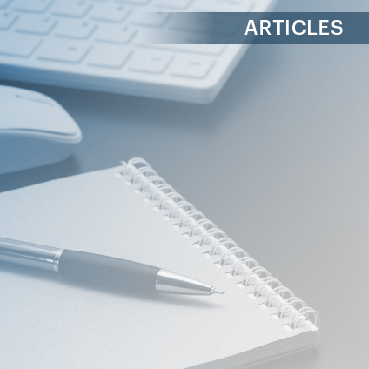An inside look at how leading administrators are staying ahead of the technology curve
When it comes to technology, everybody wants the latest and greatest system to catapult them over the competition, and hedge fund administrators are no exception. Since 2012, there have been at least 15 major acquisitions in the admin space.
This consolidation in the industry has sparked increased competition with a rise in ancillary services offered and a thirst for a technological advantage. Demands for speedy service, a maturation of tech vendors, along with a plethora of new technologies including artificial intelligence, machine learning, and distributed ledger technology have also contributed strongly to the rise of new proprietary systems and vendor partnerships.
Last year, JP Morgan partnered with DE Shaw spin-out Arcesium to use its software to underpin its fund accounting and operations. The partnership could have ramifications for the way tech vendors and established admins join forces toward mutually beneficial business models.
Other administrators are focusing on developing alternative technologies to enhance their internal operating systems, which they could then roll out to their suite of clients.
HFMWeek spoke to some of the industry’s leading admins to take an inside look at the ways they are harnessing technology to improve their product offering.
JP Morgan Teams Up with Arcesium
When Quintillion founder Joan Kehoe joined JP Morgan in 2016 as global head of alternative investment services, her new mandate included the task of invigorating and expanding the bank’s admin business.
“I’ve spent my career building businesses but here was an opportunity to transform and then re-build a business for one of the biggest brand names in financial services in the world, if not the biggest in the world,” says Kehoe. “It was too attractive a proposition to turn down.”
Kehoe founded Dublin-based fund admin Quintillion in 2006 and built it to a $20bn business before it was sold to US Bancorp in 2013.
“I’ve always tried to focus on finding the best technology and finding the best people, because fundamentally that is what this business is about,” she adds.
JP Morgan partnered with New York-based Arcesium in August 2017. The post-trade technology firm, which is led by former DE Shaw CTO Gaurav Suri, is backed by Blackstone Alternative Asset Management and supports $100bn in AuM.
JP Morgan joined a roster that includes funds like $9.2bn Balyasny Asset Management and $5.7bn EJF Capital. Through the partnership, JP Morgan uses Arcesium’s software to underpin its own fund investment operations and fund accounting. JP Morgan produces all the official books and records. JP Morgan Alternative Investment Services, which oversees $103bn in hedge fund AuM, has already converted 40% of its fund clients onto Arcesium’s software. The partnership has allowed JP Morgan to reduce the number of applications it uses to run its fund accounting systems from 50 to under 10. It has also aided the bank in managing and tracking a diverse pool of assets, including illiquid exotics and hybrids, says Kehoe.
The two businesses are in discussions over a cost-effective operating model where a manager could run Arcesium technology directly and use JP Morgan as its independent administrator.
“It’s a new concept in how managers and administrators work together,” says head of commercial strategy at Arcesium David Nable.
“Historically the manager has their system and the fund admin has their system. They’re totally disintegrated and don’t have much to do with one another. It takes a tremendous amount of effort to try to reconcile the two.”
The two firms are piloting the programme with an existing mutual client. Nable notes there has been great client interest in conversations regarding the model.
“It is designed to eliminate 95% of discrepancy because you technologically integrate the administrator with the manager, who both have their own independent views of the world,” he says.
Further collaborations to allow client access to more of Arcesium’s services could be in the pipeline, Kehoe adds. She says while they remain focused on the current offering, the admin is open to potentially exploring the partnership further.
“Arcesium has other components of the platform such as treasury and advanced middle office functions. There are lots of places where we feel that we can expand in the future.”
State Street Growing its Tech Bench Strength
Since State Street’s acquisition of Goldman Sachs’ administration services unit in 2012, the firm, which oversees around $2.7trn in assets under administration, has made an extensive push toward digitisation.
“We are actively pursuing the strategy that the company embarked on a couple of years ago. We are undergoing digitisation,” says State Street’s global chief information security officer, Adeel Saeed.
Earlier this month, State Street completed the acquisition of investment data and analytics software firm Charles River Systems for around $2.6bn, in a push to expand its services past the middle and back office and into front-office services. In 2016, State Street also launched its Beacon Program with the aim to digitise almost all aspects of its financial services business.
In the past 12 to 14 months, however, it has been looking at expanding on emerging technologies, such as distributed ledger technology, blockchain and cognitive system technologies.
“Emerging technologies is the result of our next tranche of deliverables and how we transform and enhance the value of our offering from a technology standpoint, not only to our external clients but to our internal clients as well,” Saeed explains.
State Street has been working to move many of the firm’s internal back-office functions to operate on top of a blockchain network, as a member of the Linux Foundation’s HyperLedger project. Once the firm completes internal conversions of the program it will also be rolled out to clients in an undisclosed timeframe. In the meantime, State Street is looking to build its team and recruit a robust team to work on these technologies.
“We are looking toward hiring more technologists, improving our bench strength,” says Saeed.
He adds that the firm is also always looking for fruitful potential partnerships with the appropriate vendors, alongside nurturing existing relationships.
“Now we also seek to find partnerships where we can maximise engineering resources,” he says.
SS&C Harnessing AI Technology
In the past few years SS&C has significantly grown, in part due to more than a handful of acquisitions.
Since 2012, Bill Stone’s admin giant has acquired Globe Op Financial Services, Citi’s Alternative Investor Services Business, Commonwealth Fund Services, Wells Fargo’s Global Fund Services business and Conifer Financial Services to become one of the largest fund administrators in the industry with an oversight of approximately $1trn in client assets, across single manager and FoHF mandates.
On par with its growth, SS&C has heavily invested in its technology including artificial intelligence capabilities. “The advantage with us is we are an administrator and a technology firm, so we can do things very fast and stay ahead of the curve and advance in technology,” says head of business development at SS&C GlobeOp Eamonn Greaves.
Earlier this year, the firm soft launched SS&C Singularity, a system designed to streamline investment operations and accounting through machine learning and intelligent workflow automation.
Singularity applies machine learning to drive intelligent workflow automation across the lifecycle of investment operations. It also brings together all global asset classes and ops functions into a single cloud computing environment.
“Looking at the future, we’re advancing AI and API technology to create faster reporting,” says Greaves. “Over the next one to two years it’s going to be a whole new ball game for folks out there.”
In August, the admin giant also announced the acquisition of Eze Software in an all-cash deal worth $1.5bn. Last week it closed the transaction taking on the firm’s 1,050 staff and 2,500 global clients.
“Gone are the days of just being able to strike P&L and NAV and get paid a healthy margin to do that,” adds Greaves.
“It comes back to technology. You can’t do everything required, in the timeframe that is required, with just people and off-shore locations around the world. You have to do it with technology.”





 Back to Insights
Back to Insights Back to Insights
Back to Insights